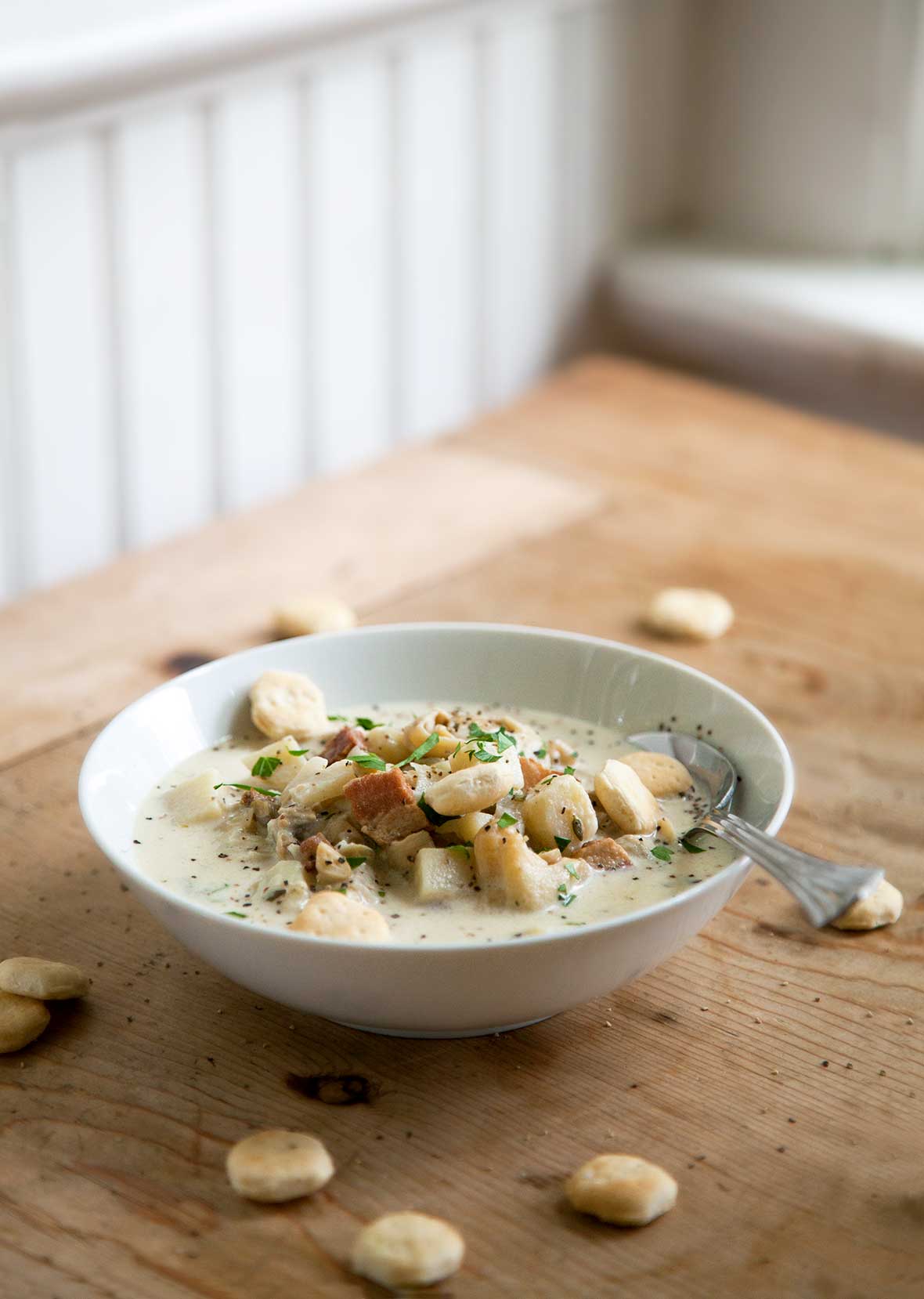
If you know anything about me, you know I adore crispy, big-bellied fried clams. I even wrote an article about them for the New York Times.
They’re nirvana, the only deserted-island food I’d reach for. Well, that and clam chowder. And the only clams I ever use for both recipes and for a New England clambake are steamer clams.
Read the Essay: The Mohel of Mollusks
And when it comes to homemade New England clam chowder, everyone has their own idea of the perfect bowl. And, more to the point, their own idea of what’s not the perfect clam chowder. This incarnation is inspired by a recipe from Jasper White, but I’ve greatly simplified the process and thrown in a few ideas of my own. This version keeps things very simple, with clams, bacon, potatoes, and oodles of cream being the main flavor contenders.
I’d never go as far as to say that this is the definitive recipe for clam chowder—those would be fightin’ words. But I’ll stick my neck out and say it comes pretty damn close.

Why You’ll Love This Recipe
What’s NOT to love? The broth is oceanic and creamy without being gloppy–a true turn-off for clam chowder lovers. You’ll find the clams sweet and, because the siphons are snipped off, tender.
Notes on Ingredients
- Clams–Steamer clams or soft-shell clams give the chowder a briny flavor with a more tender bite. Be careful with these beauteous bivalves, though, their shells are brittle.
- Potatoes–I prefer Yukon Gold for the flavor, texture, and the fact they hold their shape during cooking. You can substitute any waxy potato (new potatoes or Res Bliss) but stay away from floury potatoes, such as Idahos, as they’ll break apart in the chowder.
- Bacon–Try to find good thick-cut bacon. It’ll make the final dish a bit meatier.
Step-by-Step Instructions
Want to Save This?
- Dump the clams into a colander and set it inside a bowl of cold water. Soak for a few minutes, then drain. Repeat several times until the water is clear and grit-free.
- Bring 2 cups of water to a boil in a large pot. Add the clams, cover, and steam for 4 minutes. Stir gently, then cover and continue to steam until all the clams open.
- Scoop the clams into a large bowl, discarding any that don’t open. Strain the broth through a sieve. Once cooled, remove the clams from their shells.
- Cook the bacon in a heavy pot until crispy. Use a slotted spoon to transfer the bacon to a small dish.
- Add the butter, onion, celery, thyme, and bay leaves to the bacon fat in the pot. Cook until the vegetables are softened.
- Stir in the potatoes and reserved broth. Bring to a boil and cook until the potatoes are just tender.
- Remove from the heat and stir in the clams and cream. Season to taste. Let sit for 30 minutes.
- Rewarm over low heat. Top with bacon and parsley before serving.
Common Questions
Steamer Clams
Steamer clams–also called soft-shell clams or pisser clams–are hands down the best clams for New England clam chowder. They have two thin oval shells and a siphon or neck, which pokes out from one end.
They’re called steamer clams because that’s the way they’re most often prepared. The most famous and beloved are the steamer clams from Ipswich, which come from nearby mud flats giving them a unique mineral-y flavor.
Quahogs
Sometimes you might see a clam chowder recipe that calls for quahogs. Quahogs, also known as chowder clams (confusing, I know), are Atlantic hard-shell clams.
They have rounder, thicker, and much harder shells. When it comes to chowder, quahogs are often used in restaurant and commercial chowders. Its meat is chewier and less sweet than the steamer clams.
Bottom line, they’re not ideal for homemade clam chowder. Having said that, they’re the de rigueur bivalve used by home cooks for New England stuffed quahogs or “stuffies.”
The last thing you want is a gritty chowder; trust me on this. So cleaning the steam clams is a must.
1. Inspect–Check the clams and toss any cracked or broken ones. If any are open, tap them gently. If they close, they’re good to go. If they don’t close, they’re dead, so throw them out.
2. Soak–Place a colander in a large bowl and fill it with cold water. Add the clams, gently swish them around, then let soak for a few minutes. Lift the colander full of clams out of the bowl. Drain and refill the bowl. Repeat soaking, draining, and refilling until the water is clear and grit-less.
The important thing to consider is the creaminess of the chowder. You want a wine that will cut through that broth.
A Chardonnay Blanc is a great choice. The acidity and citrus notes cut through the chowder and pair well with the minerality of the clams.
An unoaked Chardonnay is excellent, too. The green apple and citrus notes play nicely with the clams.
Being Portuguese and from New England, I think a vinho verde is a brilliant match. It’s crisp and young, with just a bit of pétillance (fizziness) that matches beautifully with this chowder.
Pro Tips & Troubleshooting
- Make sure to clean and purge the clams fully. Gritty chowder isn’t fun.
- If you are not serving the chowder within the hour, let it cool a bit, then refrigerate. Once cooled completely, cover the chowder.
- For a thicker chowder, in step 7, mash some potato cubes with a fork and cook longer to release starch.
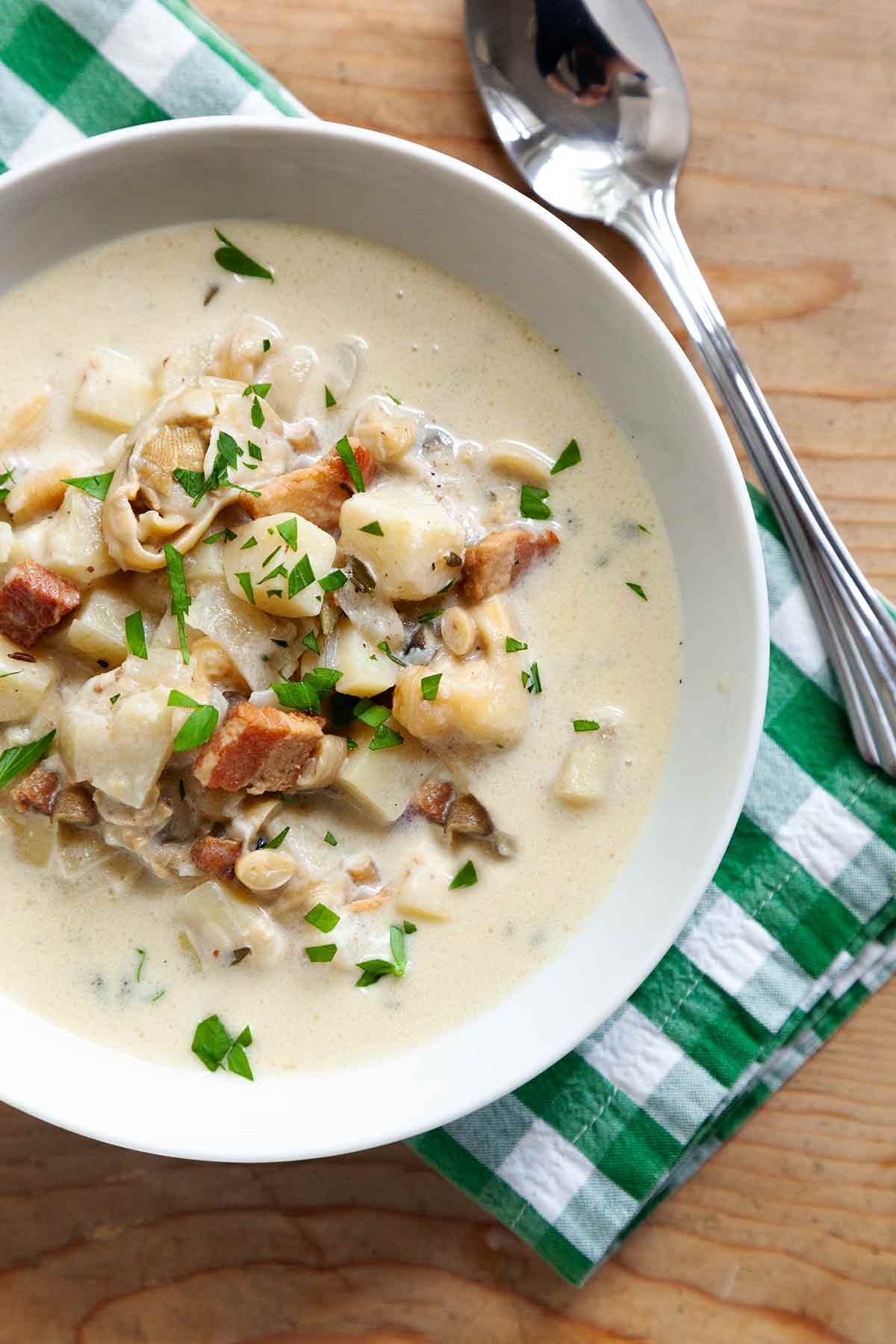
More Fabulous Clam Recipes
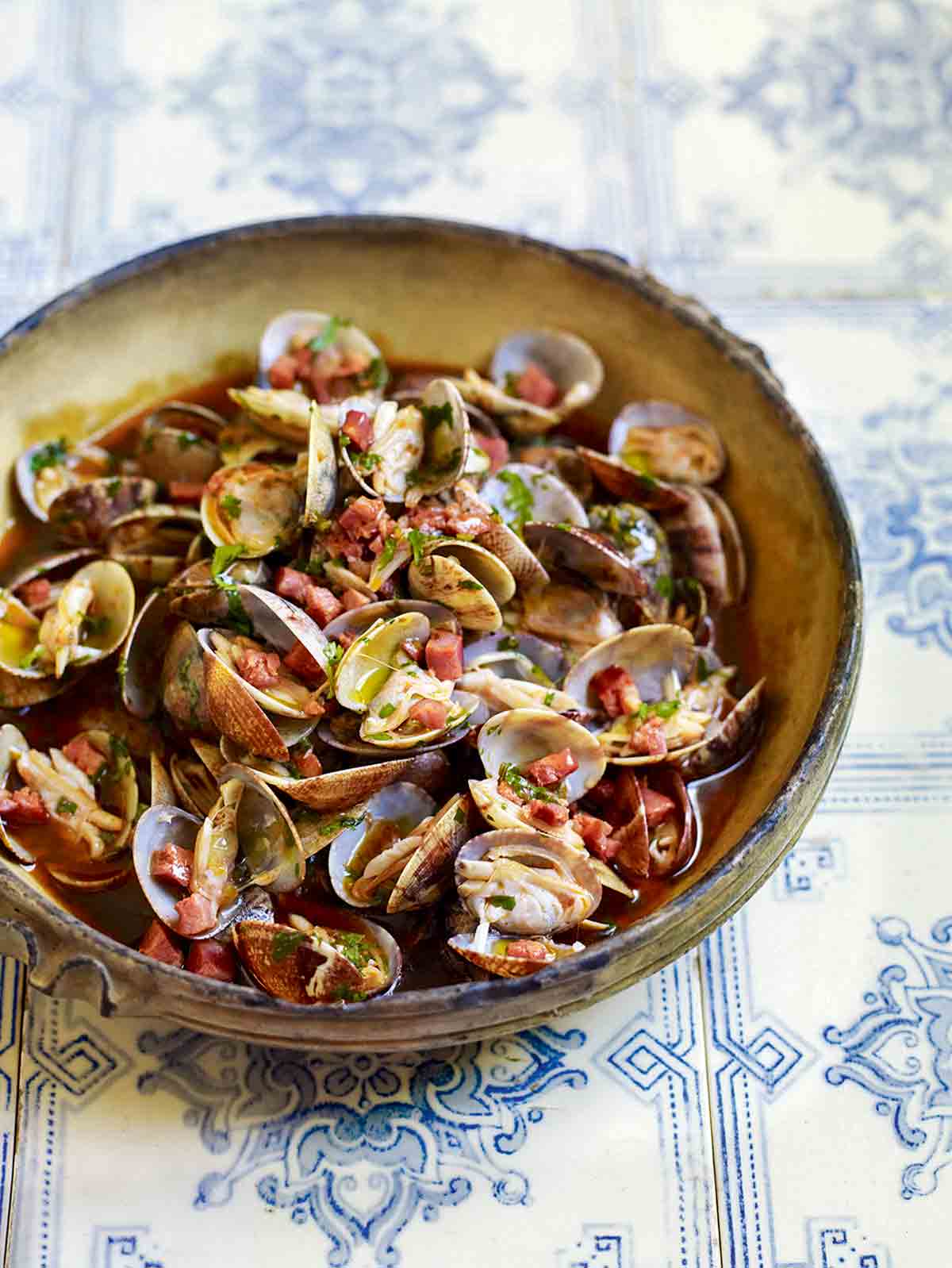
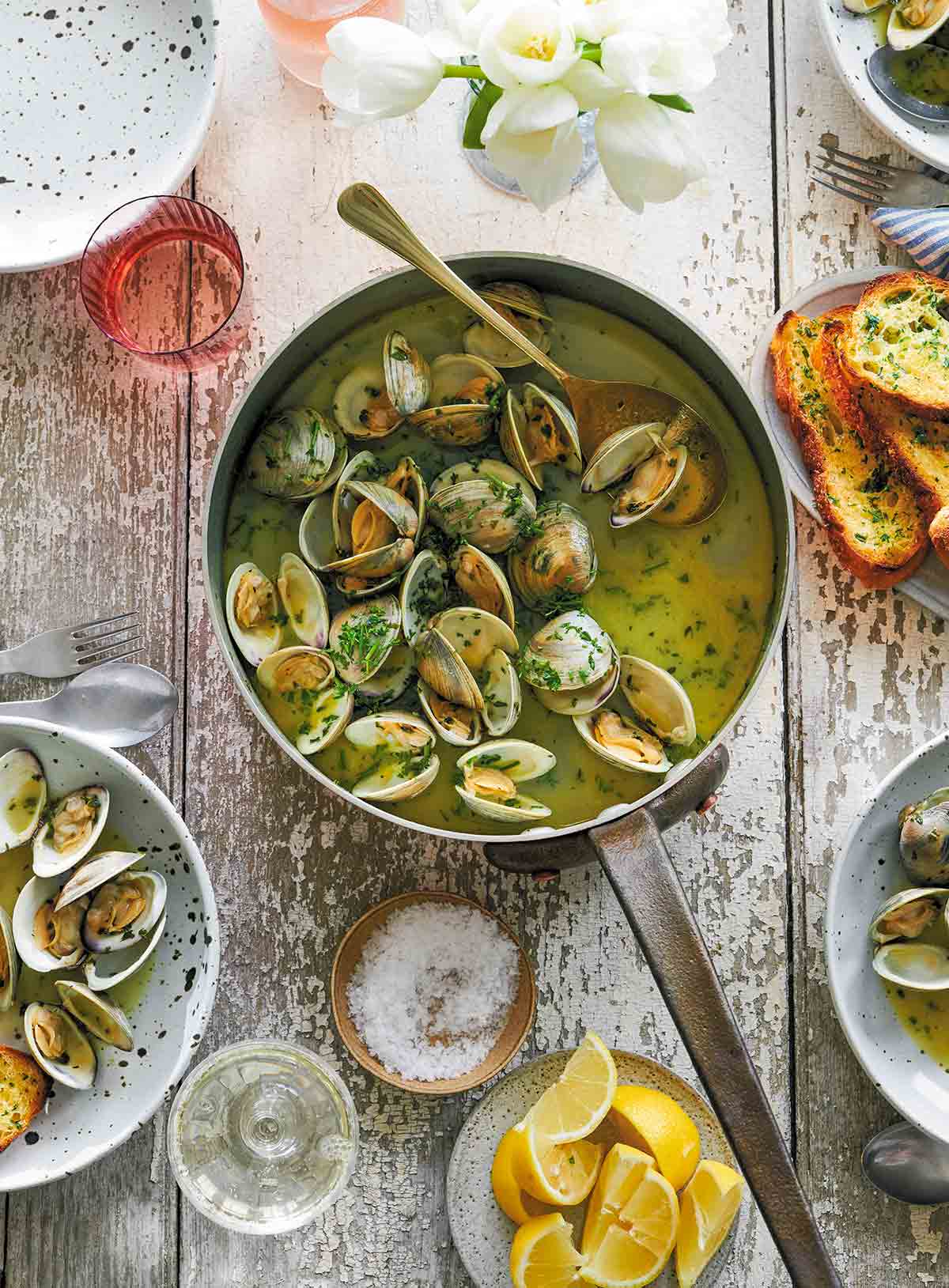
Write a Review
If you make this recipe, or any dish on LC, consider leaving a review, a star rating, and your best photo in the comments below. I love hearing from you.–David
I made this clam chowder last night, and it was AWESOME! A friend had given us some fresh Ipswich steamers that were too big to eat as steamers (HUGE bellies). After steaming the clams, I discarded the bellies and chopped up the remainder. The best clam chowder I have ever made!!
Joan
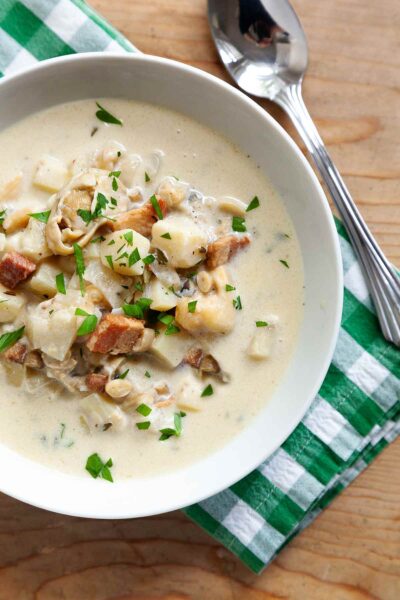
Steamer Clam Chowder from New England
Ingredients
- 5 pounds medium soft-shell clams, discard any dead clams or those with cracked shells
- 4 ounces thick-cut bacon, cut into 1/2-inch (12-mm) pieces or (and this is utterly non-traditional) Portuguese linguiça
- 3 tablespoons unsalted butter
- 1 large yellow onion, diced
- 2 stalks celery, diced
- 1 teaspoon fresh thyme leaves
- 2 bay leaves
- 1 1/2 pounds Yukon Gold potatoes, peeled and cut into 1/2-inch (12-mm) cubes
- 1 3/4 cups heavy cream
- Freshly ground black pepper
- Kosher or sea salt, only if needed
Garnish
- Chopped flat-leaf parsley
- Oyster crackers, optional
Instructions
- Place a colander in a large bowl and fill it with cold water. Add the clams, gently swish them around, then let soak for a few minutes. Lift the colander full of clams out of the bowl. Drain and refill the bowl. Repeat soaking, draining, and refilling until the water is clear and grit-less.
- Pour 2 cups of water into an 8-quart pot, cover, and bring to a boil. Scoop the clams into the pot and steam, covered, for 4 minutes. Remove the lid and gently stir the clams with a wooden spoon.
☞ TESTER TIP: The clam shells are very brittle, so stir carefully!
Cover and continue steaming until all the clams open, 4 to 6 minutes. Discard any clams that don't open. - Transfer the clams to a large bowl and strain the broth through a sieve. You should have about 4 cups.
- When cooled, remove the clams from the shells. Snip off and discard the siphons and the black, tough skin covering the siphons.
- Heat a 4- to 6-quart heavy pot over low heat and dump in the bacon. Cook until the bacon renders some of its fat, raise the heat to medium, and cook until chewy-crispy. Using a slotted spoon, transfer the bacon bits to a small dish.
- Add the butter, onion, celery, thyme, and bay leaves to the bacon fat in the pot and cook, stirring occasionally, until the vegetables are softened but not browned, 8 to 10 minutes.
- Add the potatoes and reserved broth. The broth should just about cover the potatoes. If not, dribble in some water. Crank the heat to high and bring to a boil, cover, and cook until the potatoes are tender on the outside but firm inside, 8 to 10 minutes.
- Slide the pot off the heat. Stir in the clams and the cream and add salt and pepper to taste. Like all soups, this is better when it has time to sit. Thirty minutes will do.
- When ready to serve, simmer the clam chowder over low heat. Stir gently a few times.
- Ladle the clam chowder into bowls. Scatter over the bacon and the chopped parsley. Serve the oyster crackers on the side.
Notes
-
- Clean–Make sure to clean and purge the clams fully. Gritty chowder isn’t fun.
- Thicken–For a thicker chowder, in step 7, mash some potato cubes with a fork and cook longer to release starch.
- Store–If you are not serving the chowder within the hour, let it cool a bit, then refrigerate. Once cooled completely, cover the chowder.

An LC Original
View More Original RecipesExplore More with AI
Nutrition
Nutrition information is automatically calculated, so should only be used as an approximation.
Recipe Testers’ Reviews
Wow! This clam chowder is so delicious! Even though I live on the West Coast of Canada I admittedly have never made clam chowder with fresh clams. Shameful I know!
Now I will never make it again unless I have fresh clams. The recipe was really easy to follow and using the broth from steaming the clams was brilliant, as it gave so much flavour.
I had some leftover chowder so I reheated it the next day and it was still delicious. Once it was heated up it looked and tasted just like it did the day before.
As a born and bred New Englander, I am pretty fussy about my clam chowder. It needs to have plenty of clams, a rich flavorful broth, and an aroma that brings me back to a clam shack on Cape Cod.
This “chowda” checked all the boxes. It was flavorful and smelled great. It was not as thick as some commercial brands, but that was good.
The use of Yukon Gold potatoes was the right choice. They were soft and flavorful while keeping their structure. Bacon is essential for good flavor and sautéing the onion, celery and tyme in the bacon fat added full flavor.
This recipe makes a bit pot of soup. We had it for dinner and lunch the next day and still had plenty to freeze for another dinner when we wished we were walking a beach on the Cape.
Nothing like being away from New England, yet being able to replicate a taste I so longed for. I will always recall the first time I tried the typical New England clam chowder, on my first visit to Boston. I fell in love with it.
Years passed and I ate it in various restaurants and even made it at home. This was a recipe I had never tried to make and let me tell you, wow!!!! Could not be any easier and tastier.
As I had guests at home last night, I decided to use them as guinea pigs. Also, this was an unknown soup for them, which was also interesting as Portugal is known for amazing soups, and I was hoping to make them realize that the U.S. also has amazing soups, or chowder in this case.
It was interesting to see their reactions, as these are unknown tastes to them. The final consensus was that they loved it, the richness, clam taste, the fact that you could feel each ingredient, yet they blended well together, then the surprise of the saltiness and crunchiness of the bacon to finalize it. This is a redo over and over again. Easy for the family as for a dinner party.
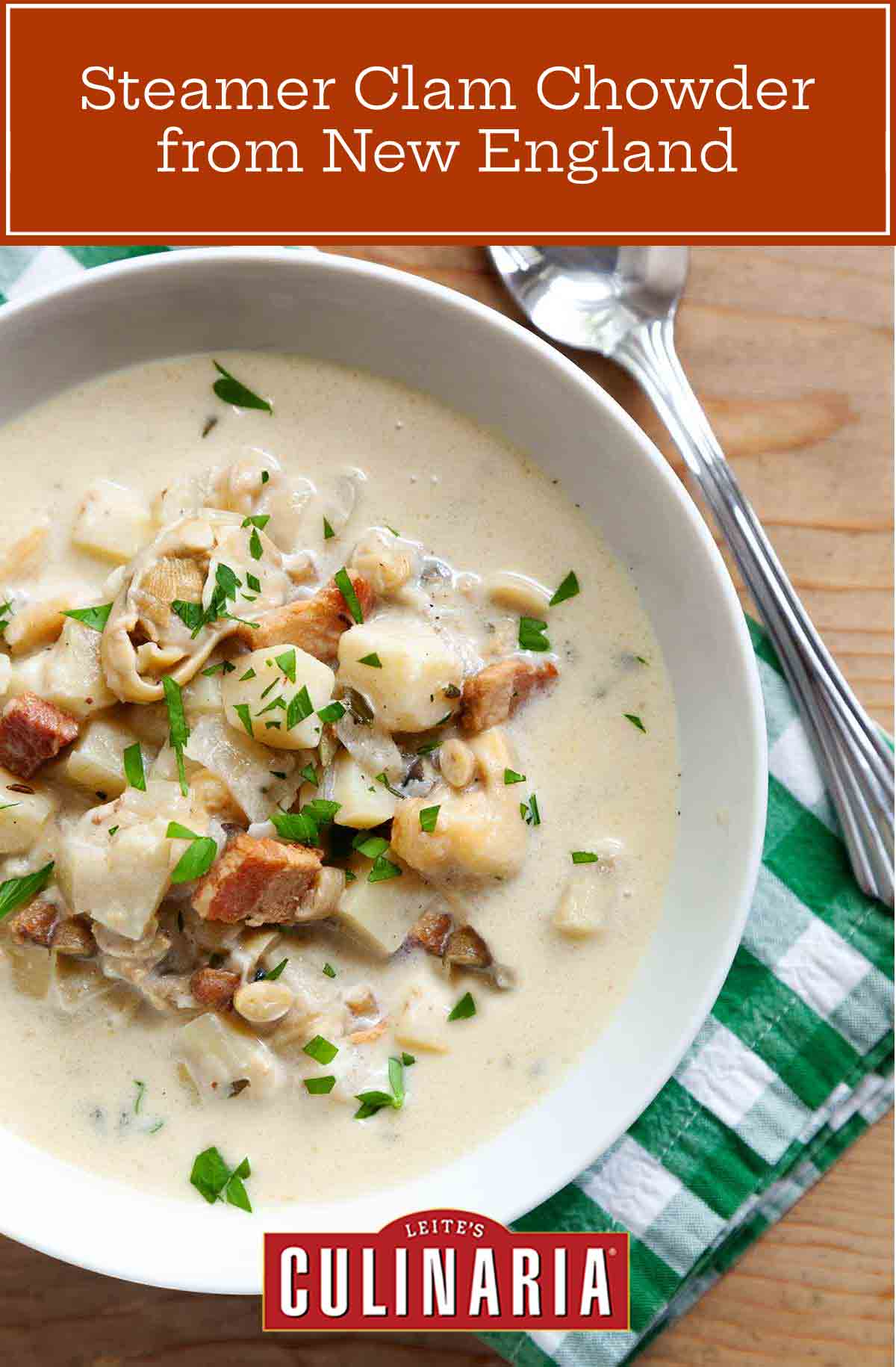
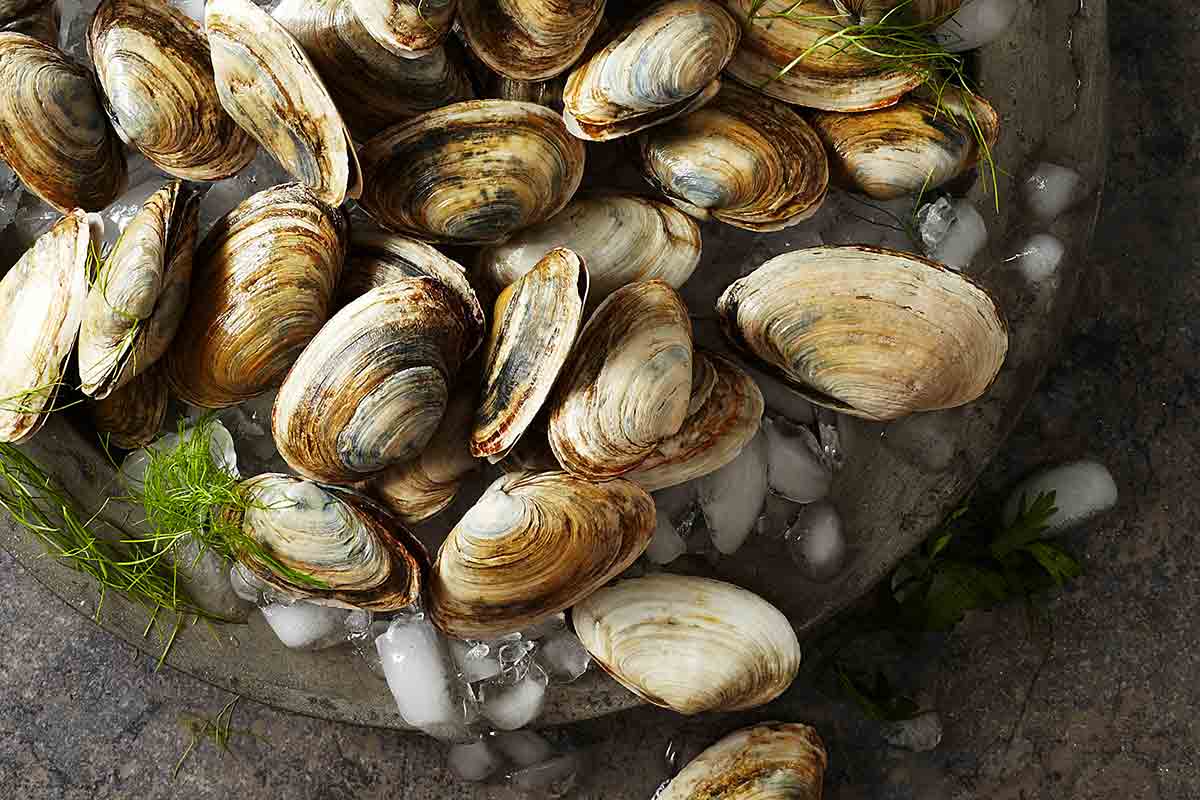
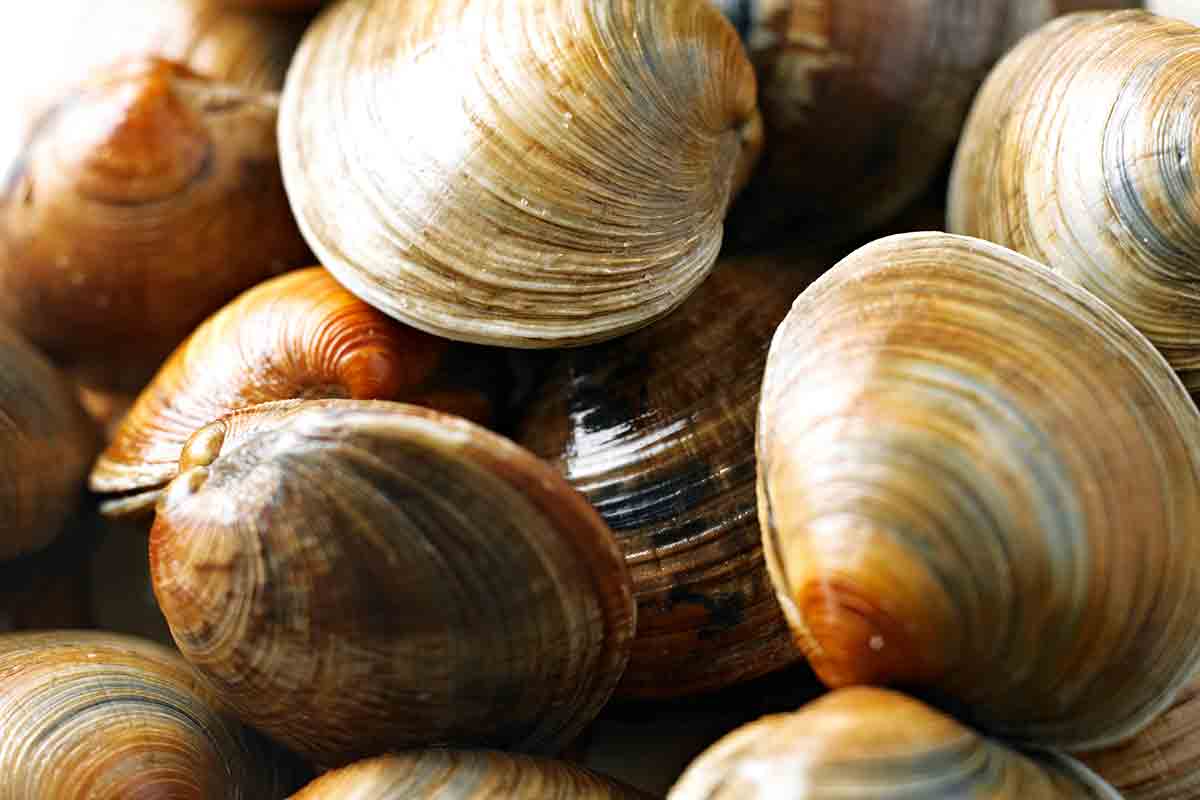













Hello! Great recipe, except…yeah, sorry, you recommend cutting off the necks, and I would not, or at least wouldn’t throw them away unless very large clams; in which case, those necks would probably be too tough, but in small to medium clams, I think they are a delicious addition to your chowder!
Stacey
Thanks, Stacey. We’ll have to give that a try.